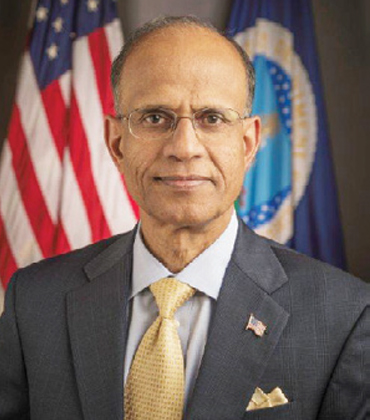THANK YOU FOR SUBSCRIBING
Drone Aviation's saga began in 2014, through the acquisition of Lighter Than Air Systems which used the crossover appeal of drone technology to break into military and civilian markets just years earlier. They brought in Jay Nussbaum, an esteemed 40-year veteran executive of government and commercial information technology sales and management, to expand their management team, lead strategic investments and advance their business development activities. Together, they inherited the loyalty and pain points of two booming markets that had an increased demand for more effective drone technology. With potential success just over the horizon, Drone Aviation looked 165 years into the past to pave a path into the future. During the Civil War, small tethered, gas-filled balloons were used as manned observation posts above the battlefield. The tether allowed the observer, alongside a telegraph operator, to be raised in the air where they would relay information to commanders on the ground. Drone Aviation took this principle and combined it with modern technology to create a new breed of craft that could address the challenges of both civilian and military markets with creative solutions. With this innovation, the company geared up to take their next big strategic step, relying on tantalizing offers of efficiency, customizability and fair prices to push their business forward. New Questions, Newer Answers With their new take on tethered drone technology, Drone Aviation ventured into their old markets with new answers. Since 2009, the military has used the company’s drones for Intelligence, Surveillance and Reconnaissance (ISR), as well as video monitoring and communications. Today, the military determines their investments by a SWaP-C model, which factors in size, weight, power and cost. While manned aircraft and existing drones bolster high upfront and operational costs, these new drones offers an easy way out. Power, command, control and data could be more securely relayed via the tether, and these drones could be more quickly and economically deployed. But that’s not all. Tethered drones, unlike traditional free-flying drones, are incapable of being jammed and capable of carrying larger payloads, flying for hours and securely collecting and distributing information without being susceptible to hacking. They require minimal training or advanced know-how to operate and are easily transportable, making Drone’s platforms a tremendous asset to the military market. The hobbycraft drones offered by the competition, on the other hand, have to carry their own power supplies, and lack the proper power to make use of high-end payloads like stabilized zoom day/ night camera systems or communications hardware. They also carry a dangerous susceptibility to radio interference.
Organizations worldwide are contending with a tsunami of damaging cyber breaches. Endpoints and networks are being bombarded with an endless stream of cyber-attacks in many forms, such as malware, phishing, authentication attacks, application attacks, ransomware, weaponized documents, and others, exploiting vulnerabilities inherent in conventional cybersecurity approaches. Government and commercial organizations are spending hundreds to thousands of dollars per-year, per-endpoint to try to maintain a viable cybersecurity posture in the face of this onslaught. Most rely on maintaining systems and software to be able to detect and identify a compromise when it occurs with a rapid response to patch a vulnerability or minimize damage from a successful attack. But achieving an “ops-tempo” with this approach that reliably matches that of the cyber threat environment has been elusive at best. Protection is only as good as the last patch which, by definition, lags the pace of an escalatin
Every year impassioned debates about how to improve outcomes for citizens, best allocate resources, and modernize infrastructure and security rule every parliamentary session across the globe. The good news is that federal bodies that are known to store vast reserves of public information are opening up to data analytics to drive modernized government services and aid their economies. In fact, a report by McKinsey & Company estimates that by digitizing information and applying analytics to improve decision-making, governments around the world can act as catalysts for more than $3 trillion in economic value. In such times, helping governments push limits in citizen services, a data-driven approach, and innovation is Cloudera. Founded in 2008 by some of the brightest minds at Silicon Valley’s leading companies such as Google, Facebook, Oracle, and Yahoo! today Cloudera is the solution of choice for civilian bodies, homeland security and defense, and state and local governments. Built

Dr. Michael Valivullah, CTO, NASS/USDA

Stu Davis, CIO, State of Ohio

Mike Wons, CTO, State of Illinois

Jim Smith, CIO, State of Maine

Kevin Burns, CISO, Draper

John Zangardi, CIO, United States Department of Defense

Alex Kangoun, Director: Data Governance, Athena IT Solutions
The future of parking management is shaped by innovative technologies that benefit consumers and businesses.
In the evolving realm of corrections, various notable policy trends are surfacing that are likely to impact the operations of facilities in the future. This article discusses some of the corrections policy
Treading the Technology Path
Information technology probably has a higher "impact" on governments than private businesses and corporations. Unlike their peers in private businesses, government CIOs doesn't have the luxury, nor the freedom to make easy technology decisions. Every decision, whether made by a federal government or a rural town council, is beholden to the citizenry that the government branch serves, and they need to be transparent in everything from purchasing decisions to data management. But there is one thing in common. Both peer groups are under constant pressure to do "more with less," when leading their organization's digital makeover. While the private sector companies are keeping in pace with the digital revolution, what government CIOs need today is a strategic rethinking of IT investments, which are made in line to harness the potential of new technologies including social, mobile, data analytics, cloud and the Internet of Things (IoT). As Gartner states, "a 'smart government' is the one that integrates information, communication and operational technologies to planning, management and operations across multiple domains, process areas and jurisdictions to generate sustainable public value." CIOs who fail to achieve this will eventually take their organizations to higher business risk and cost, while compromising the true mission of the organizations. While formulating the new strategies, government organizations should also pay heed to the ever-increasing security dilemma. Those who find a perfect synergy between the requirements and necessities, will in turn enjoy the benefits in the long run. On that note, we are presenting to you the annual edition of government technology special. The vendors and consultants featured in this issue exhibit innovative strategies that can help government CIOs achieve their objectives without jeopardizing the interest of stakeholders. This edition also features insightful articles on how organizations in the public sector are leveraging innovative technologies to streamline work and increase productivity. Let us know your thoughts.